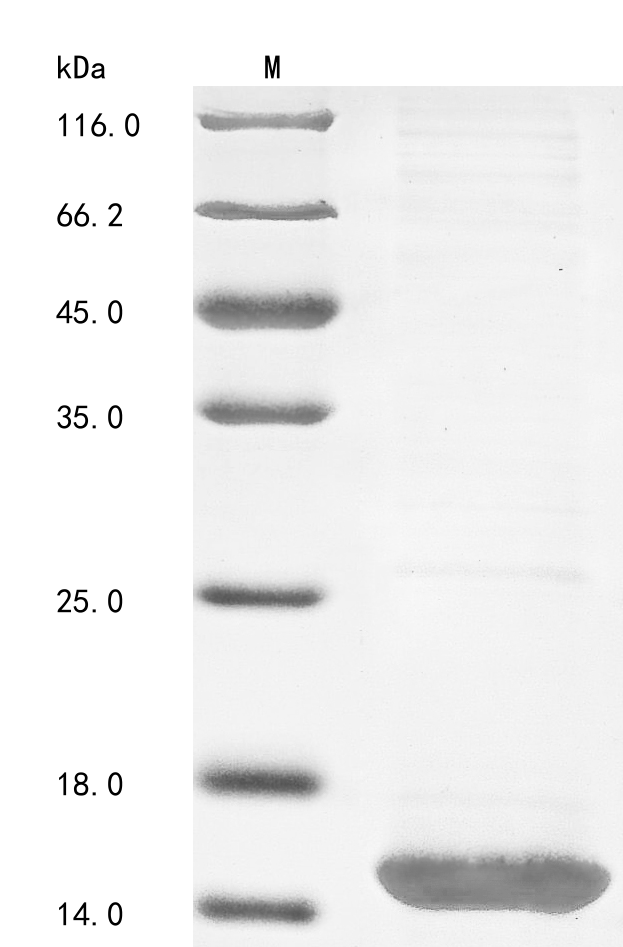Recombinant Leiurus quinquestriatus quinquestriatus Beta-insect excitatory toxin LqqIT1
CAT:
399-CSB-EP324858LDT-01
Size:
1 mg
Price:
Ask
- Availability: 24/48H Stock Items & 2 to 6 Weeks non Stock Items.
- Dry Ice Shipment: No




Recombinant Leiurus quinquestriatus quinquestriatus Beta-insect excitatory toxin LqqIT1
- CAS Number: 9000-83-3
- UniProt: P19856
- Expression Region: 1-70aa
- Organism: Leiurus quinquestriatus quinquestriatus (Egyptian scorpion) (Deathstalker scorpion)
- Target Sequence: KKNGYAVDSSGKAPECLLSNYCYNECTKVHYADKGYCCLLSCYCVGLSDDKKVLEISDARKKYCDFVTIN
- Tag: N-terminal 10xHis-tagged and C-terminal Myc-tagged
- Source: E.coli
- Field of Research: Others
- Assay Type: In Stock Protein
- Relevance: Excitatory insect beta-toxins induce a spastic paralysis. They bind voltage-independently at site-4 of sodium channels and shift the voltage of activation toward more negative potentials thereby affecting sodium channel activation and promoting spontaneous and repetitive firing. This toxin induces a fast excitatory contraction paralysis on fly larvae. It is active only on insects.
- Purity: Greater than 85% as determined by SDS-PAGE.
- Activity: Not Test
- Length: Full Length
- Form: Liquid or Lyophilized powder
- Buffer: If the delivery form is liquid, the default storage buffer is Tris/PBS-based buffer, 5%-50% glycerol. If the delivery form is lyophilized powder, the buffer before lyophilization is Tris/PBS-based buffer, 6% Trehalose, pH 8.0.
- Reconstitution: We recommend that this vial be briefly centrifuged prior to opening to bring the contents to the bottom. Please reconstitute protein in deionized sterile water to a concentration of 0.1-1.0 mg/mL.We recommend to add 5-50% of glycerol (final concentration) and aliquot for long-term storage at -20℃/-80℃. Our default final concentration of glycerol is 50%. Customers could use it as reference.
- Molecular Weight: 12.9 kDa
- References & Citations: "Primary structure of scorpion anti-insect toxins isolated from the venom of Leiurus quinquestriatus quinquestriatus." Kopeyan C., Mansuelle P., Sampieri F., Brando T., Bahraoui E.M., Rochat H., Granier C. FEBS Lett. 261:423-426 (1990)
- Storage Conditions: The shelf life is related to many factors, storage state, buffer ingredients, storage temperature and the stability of the protein itself. Generally, the shelf life of liquid form is 6 months at -20℃/-80℃. The shelf life of lyophilized form is 12 months at -20℃/-80℃.
